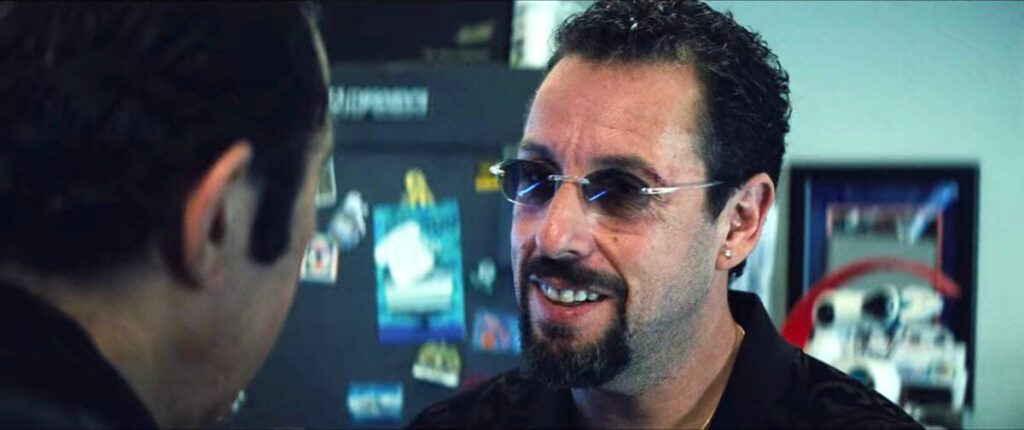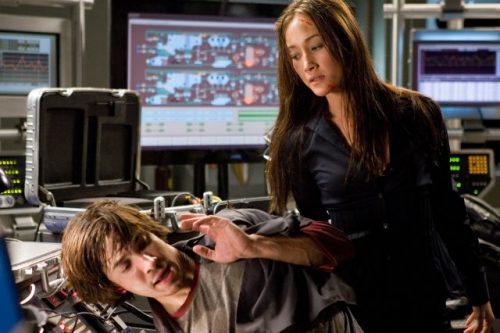
Oh, the ’70s! It was a decade of wild fashion, iconic music, and some truly groundbreaking television. While many classic shows from that era are still gracing our screens in reruns, becoming comfort viewing for generations, there are a handful of gems that mysteriously vanished from syndication, leaving us wondering what happened to all that lost magic.
It’s time to grab your bell-bottoms and settle in because we’re about to take a deep dive into some truly interesting series that totally deserved better. These aren’t just forgotten shows; they were pioneers, innovators, and cult favorites that, for various reasons, just didn’t get the staying power in reruns that their peers enjoyed. Some were ahead of their time, some faced network meddling, and others simply couldn’t catch a break.
So, if you’re ready to revisit a slice of television history that time (and networks!) forgot, join us as we explore 8 once-classic ’70s TV shows that, despite their unique charm and often profound influence, networks just don’t rerun anymore. Prepare for some serious nostalgia and maybe a few “Wait, THAT was a show?” moments!

1. **Nichols (1971–1972)**Imagine a Western that dared to be different, set in the quaint, fictional town of Nichols, Arizona, way back in 1914. This wasn’t your grandpa’s dusty cowboy drama. Instead of a trusty steed, the main character, a sheriff also named Nichols, opted for the roar of a motorcycle and the rumble of an automobile – talk about an early adopter!
But that’s not all that made this show stand out. Our hero was a pacifist at heart, refusing to carry a firearm and always preferring to find non-violent solutions to the town’s problems. It was a refreshing take on the traditional Western genre, offering a nuanced approach to justice that was quite unique for its time.
Now, here’s where it gets wild: the original sheriff was shot and avenged by his identical twin brother, Jim Nichols, who then stepped into his shoes as the new sheriff, both played by the talented James Garner. However, in a surprising turn of events, NBC pulled the plug on the series before this dramatic episode even had a chance to air.
Apparently, the network panicked when “Nichols” failed to generate the ratings they had anticipated. It’s a real shame, as this innovative show, with its progressive themes and a compelling twist, could have truly evolved. Instead, it became one of those intriguing “what if” stories in television history, a forgotten trailblazer that simply faded away too soon.

2. **Get Christie Love! (1974–1975)**Stepping into the mid-70s, “Get Christie Love!” burst onto the scene as an American crime drama that was genuinely ahead of its time. Starring the phenomenal Teresa Graves as an undercover female detective, this series aired on ABC and delivered some serious girl power, long before it was a common phrase.
Graves’ role was more than just entertaining; it was a significant milestone. She became the second Black female lead in a non-stereotypical role for a US weekly series, breaking crucial barriers and paving the way for future diverse representation on television. Her portrayal was sharp, confident, and utterly captivating.
Despite its groundbreaking nature, the series didn’t quite hit the mark in the ratings department, ending its run at a disappointing number 72 out of 84 programs on air. It faced some unique challenges behind the scenes as well, which ultimately contributed to its early demise.
As a devout Jehovah’s Witness, Teresa Graves increasingly insisted on projecting her religious values onto her role, leading to restrictions that, unfortunately, weakened the series’ narrative scope and appeal. It’s a complex story of pioneering spirit meeting personal conviction, resulting in a show that, while historically important, didn’t find its footing for a long run.

3. **Kolchak: The Night Stalker (1974–1975)**If you love a good supernatural thriller, then “Kolchak: The Night Stalker” is a name you absolutely need to know. Carl Kolchak wasn’t your average, run-of-the-mill reporter; he was a fearless investigator who dove headfirst into Chicago’s darkest corners, chasing down monsters and mysteries that baffled everyone else.
Darren McGavin brought an unforgettable intensity to the role, perfectly capturing Kolchak’s cynical yet determined spirit as he battled everything from vampires to aliens. The show mastered a “monster of the week” format that kept viewers on the edge of their seats, delivering chills and thrills in every episode.
Funnily enough, McGavin himself reportedly grew unhappy with this very format and the grueling filming schedule, which eventually contributed to the show’s short, single-season run. But here’s the kicker: despite its brief time on air, “Kolchak: The Night Stalker” developed a fervent cult status that only grew over the years.
Its influence cannot be overstated; it significantly shaped later television horror shows, laying the groundwork for many successful series to come. In fact, Chris Carter, the mastermind behind “The X-Files,” openly cited Kolchak as a “tremendous influence” in creating his iconic show. With a solid 7.8/10 rating on IMDb, its legacy as a true trailblazer in the genre is undeniable, proving that some shows are just too good to stay forgotten, even if networks don’t rerun them.

4. **Quark (1977–1978)**Who knew garbage collection could be a cosmic adventure? Well, Buck Henry certainly did, as he brilliantly transformed the mundane concept of waste disposal into an interstellar comedy extravaganza with his show, “Quark.” This delightfully quirky series whisked viewers away to the year 2226, aboard a United Galaxy Sanitation Patrol Cruiser – an intergalactic waste scow operating out of the United Galaxy Space Station Perma One.
The central character, Adam Quark, was tasked with the unenviable job of cleaning up space by collecting “space baggies.” He wasn’t alone in this cosmic quest, however; he was accompanied by his truly peculiar crew, making for some hilariously awkward and off-the-wall situations. It was a clever, witty, and surprisingly intelligent take on science fiction comedy.
Unfortunately, despite its imaginative premise and unique humor, “Quark” struggled to find a large audience. It suffered from low ratings and was ultimately canceled after a mere eight episodes, leaving fans wanting more of its satirical charm. Sometimes, even brilliant concepts don’t quite get the airtime they deserve.
Yet, the show did earn some high praise from an unexpected source. None other than Gene Roddenberry, the visionary creator of “Star Trek,” lauded its intelligent approach to humor before its cancellation. It’s a testament to the show’s quality that such a sci-fi legend recognized its brilliance, cementing “Quark” as a forgotten gem with a lot of smarts and laughs.
Read more about: Remember the ’70s? These Pivotal Moments and Transformations Mastered the Global Scene and Shaped Our World Forever.

5. **The Fantastic Journey (1977)**Prepare to enter the mysterious depths of the Bermuda Triangle with “The Fantastic Journey,” a series that truly lived up to its name. At its heart was the enigmatic Varian, portrayed by the legendary Roddy McDowall, who led a band of time-displaced travelers through strange and fantastical realms. It was a show brimming with wonder and peril, a true sci-fi fantasy treat.
Though the series only lasted for ten episodes, its ambition and creativity left a significant mark. The visual effects, impressive for their time, and its complex mythology garnered a dedicated following, proving that quality can often outweigh quantity. Viewers were captivated by the strange new worlds and the intriguing lore the show built.
Even modern audiences continue to be charmed by its unique appeal, which is quite evident from its surprising 72% audience score on Rotten Tomatoes. This indicates that its magic still resonates, decades after its initial run. It seems some journeys are truly timeless, even if cut short.
However, the show faced its own set of trials. Reports indicate that NBC had poured approximately $200,000 per episode into this lavish production – a considerable sum for the era. But despite the hefty investment, the series reportedly suffered from extensive network tinkering and was rushed into production, which may have hindered its full potential. It’s a classic tale of creative vision battling corporate pressures, resulting in a fascinating but ultimately brief fantastic journey.
Read more about: Behind the Screen: 11 Iconic Movie Sets That Were Total Nightmares for Cast and Crew

6. **Ghost Story/Circle Of Fear (1972–1973)**Get ready for some classic horror anthology goodness with “Ghost Story,” a series that brought together an incredible roster of talent, both behind and in front of the camera. Imagine horror masters like William Castle and Richard Matheson crafting chilling scripts, while future stars such as a young Jodie Foster delivered truly great, spine-tingling performances. It was a powerhouse of spooky storytelling!
Originally airing as “Ghost Story,” the series captivated audiences with its self-contained tales of terror. However, it experienced a turbulent mid-season transformation due to a drop in ratings. NBC decided to retool the show, giving it a new title: “Circle of Fear.” This wasn’t just a name change; it came with a whole new look.
Along with updated opening title graphics and fresh theme music, Sebastian Cabot, who had previously served as the series presenter, was no longer part of the package. NBC’s official stance was that the retooling aimed to tone down the supernatural elements, perhaps to broaden its appeal. It was a move that, in hindsight, might have missed the mark.
Audiences of the era were accustomed to sizable twist endings in other popular anthologies, a narrative device that was unfortunately rare in this particular show, even after its rebranding. This lack of satisfying narrative payoffs might have contributed to its struggle to retain viewers, despite the sheer talent involved. “Ghost Story/Circle of Fear” remains a fascinating example of a show with immense potential that ultimately fell victim to network interference and perhaps a misreading of its audience’s desires.

7. **Gemini Man (1976)**Alright, get ready for a deep dive into another one of those “what could have been” shows from the groovy ’70s! We’re talking about “Gemini Man,” a series that definitely had big shoes to fill, aiming to replace the previous season’s sci-fi hit, “The Invisible Man.” The network was clearly trying to keep the invisible hero vibe going, but with a clever twist, and, let’s be real, hoping for simpler and less expensive special effects! It’s all about that budget, baby, even back then.
The star of this high-octane secret agent drama was the charismatic Ben Murphy, who played Sam Casey. Sam wasn’t just any agent; he was a top-tier secret operative for an organization called INTERSECT – which, by the way, stands for “International Security Techniques.” How cool is that? This government think-tank was basically the go-to for all things covert, specializing in missions that were far too sensitive for the usual channels. Sam, with his unique bionic capabilities, was their ultimate asset, making every episode a thrilling ride of espionage and daring feats.
Sam’s unique ability to become invisible for 15-minute bursts was the core of his powers, a truly engaging concept that allowed for all sorts of incredible spy antics. Picture him sneaking past guards, infiltrating enemy bases, or making a grand escape right under the noses of his adversaries. This premise offered so much potential for imaginative plots and suspenseful situations, keeping viewers on the edge of their seats, eager to see how Sam would use his limited invisibility to save the day. It was a fantastic blend of classic spy thriller with a dash of futuristic sci-fi, perfectly encapsulating the experimental spirit of ’70s television.
Despite the cool concept and a total of 12 episodes actually being produced, “Gemini Man” sadly had its television run cut short after only five episodes. What happened? A double whammy of failing ratings and, despite the initial cost-saving intentions, still relatively high production costs. It’s a harsh reality check for many ambitious shows, proving that sometimes even the most exciting ideas can’t beat the bottom line or a tough time slot.
But here’s a super interesting twist for you: the remaining six episodes, which never saw the light of day for American audiences, actually found a home and “somewhat greater success” across the pond in Britain! Imagine that, an entire chunk of the series enjoyed by another country while its home nation missed out. It just goes to show that sometimes, a show’s true audience is waiting elsewhere, and “Gemini Man” became another one of those intriguing “what if” stories in television history, a forgotten trailblazer that simply faded away too soon in the U.S.

8. **The Starlost (1973–1974)**Next up, let’s blast off into the cosmos with “The Starlost,” a Canadian production from the ’70s that was as ambitious as it was, well, challenging. This sci-fi gem was the brainchild of the legendary writer Harlan Ellison, and it took viewers on an absolutely epic journey aboard a massive generation ship. Can you even imagine? A whole world cruising through the vastness of space, exploring isolated societies and grappling with some pretty heavy environmental themes – talk about being ahead of its time!
The core concept was truly fascinating: humanity’s survival hinged on a colossal ship, containing multiple “domes,” each a self-contained ecosystem, effectively mini-worlds with their own distinct cultures and challenges. It was a narrative goldmine, allowing the show to delve into profound sociological and ecological questions, making it a surprisingly deep watch for the era. Despite having to work within some pretty tight effects limitations – hey, it was the ’70s, not Hollywood blockbuster territory! – the show’s complex storytelling actually earned it some serious street cred, even bagging a Writers Guild Award. That’s a huge win for a series trying to push boundaries without an unlimited budget, proving that a compelling story can always shine through.
However, the journey of “The Starlost” was far from smooth sailing. Here’s where things get a bit messy: the budget was reportedly slashed when the BBC decided to pass on what was initially conceived as an 8-episode miniseries. This pivotal moment led to the show being sold into syndication, which, as we know, can be a bit of a roll of the dice in terms of creative control and production quality. Sometimes, when shows are rushed or their budgets are cut, the final product suffers, and this was sadly the case here.
And unfortunately, the critics at the time didn’t hold back, giving some rather brutal assessments. One memorable critique described the show as mixing “third-rate television production techniques with bizarre illiteracy of form and content and bare-bones production values.” Ouch! It’s a sad and rather harsh assessment for a concept that had such incredible potential, especially with Ellison’s visionary touch.
It’s a bittersweet entry on our list, illustrating how even the most brilliant and ambitious ideas can sometimes fall victim to production woes and network decisions. “The Starlost” remains a fascinating example of a show that aimed for the stars with its narrative, but couldn’t quite escape the gravitational pull of its terrestrial production challenges, making it a truly unique, if troubled, piece of ’70s sci-fi history that networks just don’t rerun anymore.
Unsurprisingly, facing off against such entertainment behemoths led to consistently low ratings, ultimately sealing the show’s fate. It’s a classic, bittersweet case of a quality show being drowned out by juggernauts, destined to become a forgotten, yet significant, piece of television history despite its innovative approach to storytelling. “Executive Suite” reminds us that even with “unprecedented realism” and a stellar cast, sometimes the biggest challenge in television is simply finding an audience in a crowded and competitive landscape, proving that even great shows can slip through the cracks of rerun history.
So there you have it, folks – a truly nostalgic trip down memory lane to some of the 1970s’ most intriguing, innovative, and, ultimately, un-rerun shows! From a pacifist sheriff cruising on a motorcycle in the Old West to cosmic garbage collectors cleaning up space, and high-tech detectives guided by futuristic surveillance, these series dared to be different. They pushed creative boundaries, challenged conventional narratives, and definitely left their own unique, if unacknowledged, imprints on the television landscape. While they might not be gracing our screens in endless syndication anymore, their stories serve as a vibrant testament to the wild, creative, and often experimental spirit of ’70s TV, proving that even the most fantastic forgotten gems can still sparkle for those willing to dig a little deeper into television history. What a ride!



